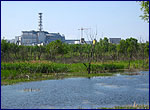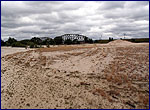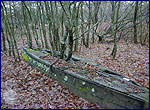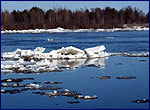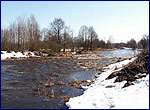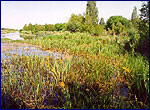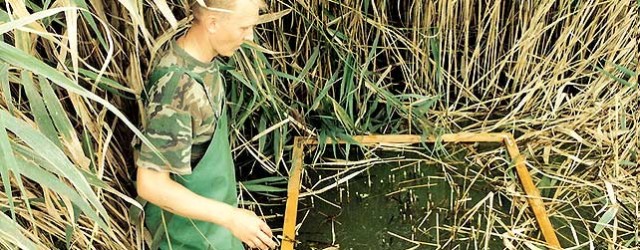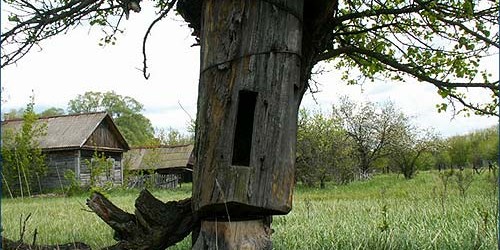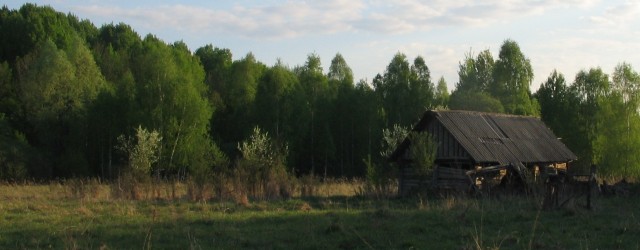
Physical-geographical feature of the exclusion zone
According to physicist-geographical zoning, Chernobyl NPP 30-km exclusion zone is referred to the Kiev Poless’e, that situated in south part of Poless’e province. Region is characterized by general gradient of surface from west and north-west on the east and south-east. Absolute marks are changed from 103 to 182 m. There is rather wide river network on the territory. Territory is drained by Pripyat, Uzh, Teterev river valleys and others. Extensive spaces of the ChNPP 30-km exclusion zone is bogged.
Region climate, as a whole, is mild-continental with warm summer and mild winter. Presence of forests, ponds, reservoirs, bogs and settlements provides arising of local climatic conditions. In winter air temperature changes from -25 to +5 Celsius, average -6. Depth of frozen soil reaches 80 cm, height of snow cover is 16 cm. Temperature ranges from 17 to 19 Celsius during summer. Average length of unfreezing period is near 160 days. Annual average precipitation amount forms near 500 cm.
Nature of relief, maternal rocks, climatic conditions and herbage provide territory soil variety. On water-glacial sediments with prevailed sandy gravimetric composition, as well as on soil plots that are near river valleys, sandy ground are changed by clay sand and at small reduction of relief by sandy loam soils. There are low soddy podzol soils on interfluves and on increased plots and there are soddy podzol and boggy soil on sandy loam deposits and on relief depression.
Relief of modern surface Chernobyl exclusion zone
As result of carried out studies within of 30-km zone it was chosen five types of genetically homogeneous surfaces:
a) denudation plain that is packed with deluvium and alluvium sands and loam sand;
b) accumulative-denudation plain that is packed with deluvium and alluvium proluvium sands;
c) accumulative-denudation plain that is packed with deluvium – proluvium and alluvial sands;
d) accumulative-fluvial plain (flood plain terrace) that is packed with alluvial and alluvial-bogged sands;
d) accumulative-fluvial plain (terraca above flood plain) that is packed with alluvial and alluvial-bogged sands, loams and peatbogs.
Erosion declivities of river valleys, denudation-erosion declivities, riverbeds of large rivers, former river-beds and intercrest reductions, extended bogged flood plains, absolute former river-beds, lake-bogged and bogged lowlands and crests relay to the forms and elements of the relief, that is situated within chosen genetic types.
Erosion and denudation-erosion declivities of river valleys are developed, basically, on the Pripyat right bank on the section between villages Priborsk and Oranoe and on the left bank of r. Teterev. Declivity of r. Teterev valley has brightly expressed abrupt character. Bluff height reaches 12 м near village Oranoe and decreases a little up along river. In the Pripyat valley the most bluff declivities is marked near Chernobyl and village Lelev. Bluff edge high is 20 m, and then in north-west and south-east valley slope is gently sloping.
Large river within the territory is the Pripyat river. It crosses the area from north-west to south-east, is meandering within the broad flood plain. Width of the riverbed is highly inconstant – from 60-100 m on north-west to 700-800 м near v. Otashev at mouth. Down in south-east r. Pripyat and its multiple flood dead channels are merge with the bay of the Kiev reservoir. Riversides is gently sloping, however there are multiple small areas with bluff coasts and height up to 2-4 м. Absolute marks of water line are near 103 m and they define small gradient of riverbed in a whole.
Rivers Teterev and Uzh yield to river Pripyat in size greatly. Their width usually does not exceed 80 m. Absolute marks of water line are varying within from 106 to 103 m. Gently sloping coasts are changed on bluff ones. Meander-line of the riverbeds is more weak, than r. Pripyat riverbed.
Intercrest reductions in the Pripyat flood plain have highly sinuous nature, reflecting development of multiple meanders. In relief of the flood plain residuary crests have different height, basically in 1-13 m. Arcs of intercrest reductions quite often cut each other or are limited near basis with rectilinear or low curved reduction. Extended bogged flood plains are typical for small rivers – influxes of the Pripyat, Uzh, Braginka, Teterev. Among them it is possible to select river Nesvich, Veresnia, Hocheva, Il’ia and others. Those bogged flood plain width reaches 200-500 m and in the Braginka-Pripyat interfluve reaches 1-2 and more km. Nearly all riverbeds of these rivers are channelled and bogs are withered partly. After the ChNPP accident were build multiple dams along small rivers for reason of radionuclide migration retardation. As result it has occurred underflooding of the territory and secondary peatbog irrigation.
Reference:
Tixomirov F. A., Scheglov A. I., Cvetnova A. B., Klyashtorin A. L. Geochemical migration of radionuclides in forest ecosystems of ChNPP radioactive zone // Pochvovedenie. 1990, № 10. – p. 41-50.
